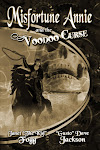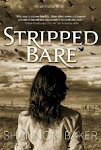Besides pitching to filmmakers seeking scripts through lead services, exciting others with your story at festivals, finaling in contests, and joining local groups like CASA (Colorado Actors and Screenwrites Assembly), you can seek out the help of an agent, manager, or an entertainment attorney.
A Hollywood agent helps find someone to purchase your film. One who is a Writers Guild Signatory charges 10%, no reading fee, and has a 90 day termination clause. Hollywood directories will tell you who’s who and give contact information. Consider attending film festivals. I pitched to a Hollywood agent at one. He represented me for about a year. During that time he brought a romantic comedy (written with Christian Lyons) to Barry Sonnenfeld (MIB), a sci-fi farce (written with Janet Fogg) to James Cameron (Titanic), and a supernatural thriller (written with Janet Fogg) to Sony, HBO and Showtime.
Christian and I were told our script was considered in the final three, but Fun With Dick and Jane (Jim Carrey and Téa Leoni) won out over ours—a great movie, so I can’t complain too much.
Managers are not WG Signatories. They typically charge 15%. Their role is to nurture your career. They may also help make connections. They can’t sell your work without an attorney. By CA law, if a manager ends up producing your movie, she can’t charge you the 15% fee. It can create a conflict of interst if your manager is also producer on the project; she is trying to limit budget and that includes the purchase price of the screenplay.
Also producers bring scripts to actors or directors.
An entertainment attorney can play several roles. Protecting your interests should be paramount. An attorney I signed with when producer Ken Berk took my story under his belt years ago also helped market work as part of his practice, sometimes even books to N.Y.
If you get yourself out there and expose your talent to people who can help you market it, you may well break in with a spec script as your advertisement.
Another way to break in is to write an adaptation of another work. Your own or someone else’s. I’ll discuss adaptation in the next few posts. Meanwhile, keep your dialogue snappy and your directions brief. Don’t step on the director. Avoid dusk and dawn. --- from the Inkpot
(first published on the Writing From the Peak Blog April 4, 2011)




















